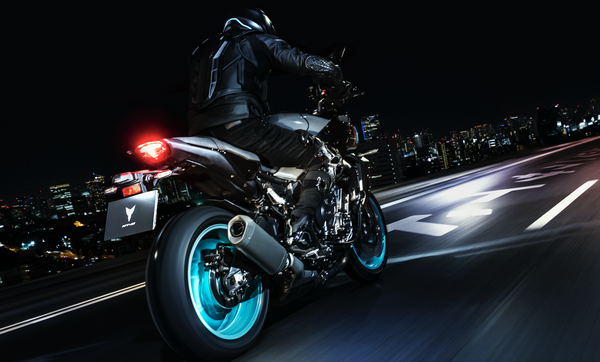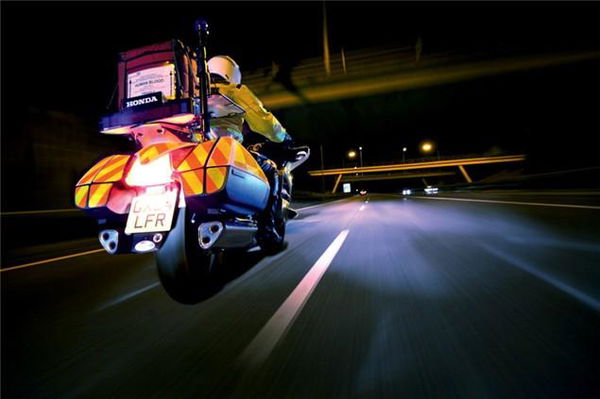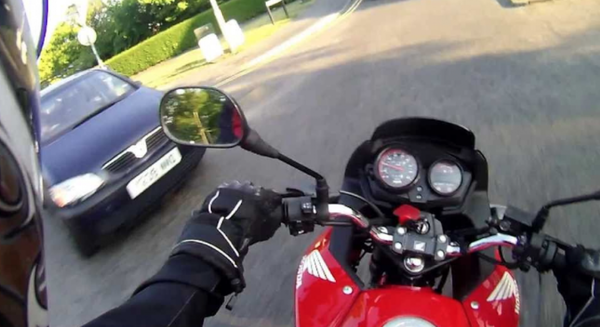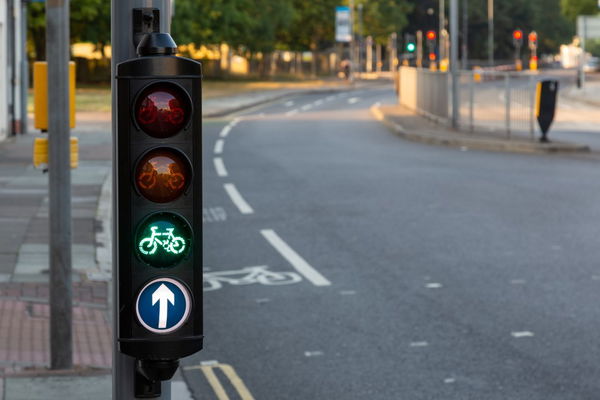Night Rider | How to be seen and ride more safely at night
As summer waves goodbye and the nights draw in, the pleasant afternoon commute home can quickly seem a much lonelier and less enjoyable experience. Here’s how to ensure you get through it safely.

There are times when riding at night has an almost romantic feel to it, long rides on a clear along unknown B-roads, with the just the suicidal moths for company. But the commute along the motorway by motorcycle in the pissing rain can quickly become tiresome.
The problem with riding at night is that a motorcycle becomes an even more vulnerable method of transport. RoSPA has reported that 40% of road accidents occur at night, at odds with the fact that there is only 15% of the volume of traffic on the road at this time.
The first thing that puts riders at risk is our lack of visibility. Bikes are small, nimble and can creep up on cars in a matter of seconds. Much quicker than the average commuter can even check their rear-view mirror.
We aren’t urging everyone to go out and grab a ‘Polite’ vest (we aren’t heathens you know!) but a set of textiles with some brightly coloured flashes and reflective elements will massively improve your chances of being seen at night. Even a cheap, brightly coloured rain suit to keep under your seat will provide more visual warning to drivers than the black 2-piece suit you’ve been rocking all summer.

Next up it’s time for you to alter your riding a little. Slow up, not a bit, a lot. Cars will have more time to spot you and you’ll have more time to figure out what it is they’re going to do. Car drivers are a weird breed (well, the ones that don’t also ride anyway!), we have to do some of their thinking for them.
The chances are the roads are colder now, your tyres are colder, and the roads will probably be wet. You now have less grip than two months ago. Take your time and focus on being as smooth as you can. Don’t tense up, just relax and try your best to remain calm in all situations. If something happens on the road ahead, don’t react – respond. A reaction is knee-jerk and made in the heat of the moment. A response is calculated and more considered. That calculation and consideration takes a split second to do, slowing down gives you the time to make those decisions.
Keep warm and dry, all over! Cold hands and feet aren’t as responsive to the messages from the brain when they are cold. And a chilly biker with a drip of freezing water running down their back is going to feel agitated and annoyed at the situation. That’s all taking up computing power that should be focussing on the task in hand – not getting squashed!
So, we’ve covered you, your riding and your kit, but what about your bike? You should really have as much winter attention on your wheels as you should on yourself. A decent self-done MoT before winter hits is a great idea. Pay attention to the brakes, tyres, lights and electrical connections. There’s nothing worse than sitting at the side of the motorway after water has fried your reg-rec, and it’s three below and raining – trust me, I know! A set of proper high-intensity bulbs are a good shout too. I fitted some to my old KTM and it transformed riding at night into a much more pleasurable and safer activity.
Another thing to keep in mind, especially if your commute takes a rural turn, is the wildlife. Some of the biggest mammals in the UK only come out after dark. Foxes, badgers, deer and even hedgehogs could be enough to ruin your day. Admittedly, there isn’t a lot you can do if one springs out in front of you but, hitting one at 60 will hurt a lot more than hitting one at 40. For you and the animal!












